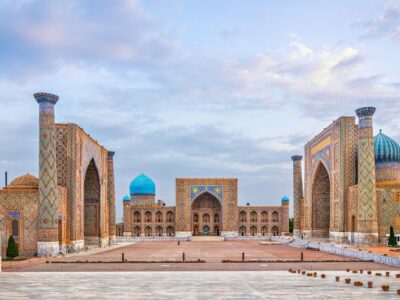
Temples in Haridwar, nestled in the foothills of the Himalayas, is a city revered by millions of Hindus as one of the holiest places in India. Its name, literally meaning “Gateway to the Gods,” speaks volumes about its spiritual significance. Among the myriad temples that adorn its landscape, there are a few that stand out for their profound connection to the divine. Let’s embark on a spiritual journey through these sacred sites and explore the keys they hold to unlocking divine connection.
Har Ki Pauri:
Har Ki Pauri, meaning “Footsteps of the Lord,” is perhaps the most iconic and revered ghat in Haridwar. It is believed to be the spot where Lord Vishnu left his footprint while saving the universe. Every evening, the ghat comes alive with the mesmerizing Ganga Aarti, a ritualistic offering to the river Ganges. Devotees flock here to witness this spectacle, where priests clad in saffron robes perform synchronized rituals accompanied by chants and the glow of oil lamps. The ambiance is charged with spirituality, and being a part of this ancient tradition can evoke a profound sense of connection to the divine. As the flames dance in harmony with the chants, devotees find themselves immersed in a timeless moment, where the sacred and the mundane blend seamlessly.
Chandi Devi Temple:
Perched atop the Neel Parvat on the eastern summit of the Sivalik Hills, the Chandi Devi Temple is dedicated to Goddess Chandi, an incarnation of Goddess Parvati. Legend has it that the temple was built in the 8th century by Adi Shankaracharya, a renowned Hindu philosopher. To reach the temple, devotees can either undertake a steep trek of about 3 kilometers or opt for a thrilling cable car ride. The panoramic views of Haridwar from the temple premises are awe-inspiring, but it is the serene atmosphere inside the sanctum sanctorum that truly facilitates divine communion. Devotees offer prayers and seek blessings, feeling the presence of the goddess pervading the surroundings. The ascent to the temple, whether through the arduous trek or the swift cable car, symbolizes the spiritual journey of overcoming obstacles to attain the divine grace of the goddess.
Mansa Devi Temple:
Another significant temple atop the Bilwa Parvat is the Mansa Devi Temple, dedicated to Goddess Mansa, believed to fulfill wishes and desires of her devotees. The temple is accessible via a cable car ride or a trek, offering stunning views of the city and the Ganges. Devotees tie colorful threads or ‘moli’ on the sacred tree within the temple premises, symbolizing their wishes, which they believe will be fulfilled by the benevolent goddess. The air is filled with fervent prayers and chants as devotees express their deepest desires, forging a direct connection with the divine presence believed to reside here. Each thread tied on the sacred tree represents a heartfelt wish, weaving a tapestry of hope and faith that binds devotees to the divine mother’s benevolence.
Maya Devi Temple:
The Maya Devi Temple, one of the Siddhapeeths, holds immense historical and religious significance. It is believed to be the spot where the heart and navel of Goddess Sati, wife of Lord Shiva, fell after her self-immolation. The temple complex houses the deity of Maya Devi in the form of a three-headed stone image, along with other shrines dedicated to various gods and goddesses. Pilgrims throng to this ancient temple to seek blessings for fertility and childbirth, as the goddess is revered as the Adhisthatri deity of Haridwar. The sacred vibrations within the temple precincts create an atmosphere conducive to connecting with the divine feminine energy. Devotees offer prayers and perform rituals, seeking the divine mother’s blessings for nurturing life and overcoming obstacles on the path to spiritual growth.
Bharat Mata Mandir:
While not a traditional temple dedicated to a specific deity, the Bharat Mata Mandir holds a unique place in the spiritual landscape of Haridwar. It is dedicated to Mother India and showcases a huge relief map of undivided India, carved out of marble. The temple complex also houses statues of various freedom fighters, saints, and deities symbolizing the unity in diversity of India. Visiting this temple instills a sense of patriotism and reverence for the land, fostering a deeper connection with the divine as it manifests through the collective spirit of the nation.
In Conclusion, the temples in Haridwar serve as conduits for seekers to establish a profound connection with the divine. Whether through rituals, prayers, or simply soaking in the spiritual ambiance, these sacred sites offer a sanctuary for spiritual exploration and transcendence. Each temple carries its own unique energy, guiding devotees on a journey of self-discovery and divine communion. As pilgrims flock to these holy abodes seeking solace and blessings, they find themselves drawn closer to the divine presence that permeates every aspect of Haridwar’s sacred landscape.











